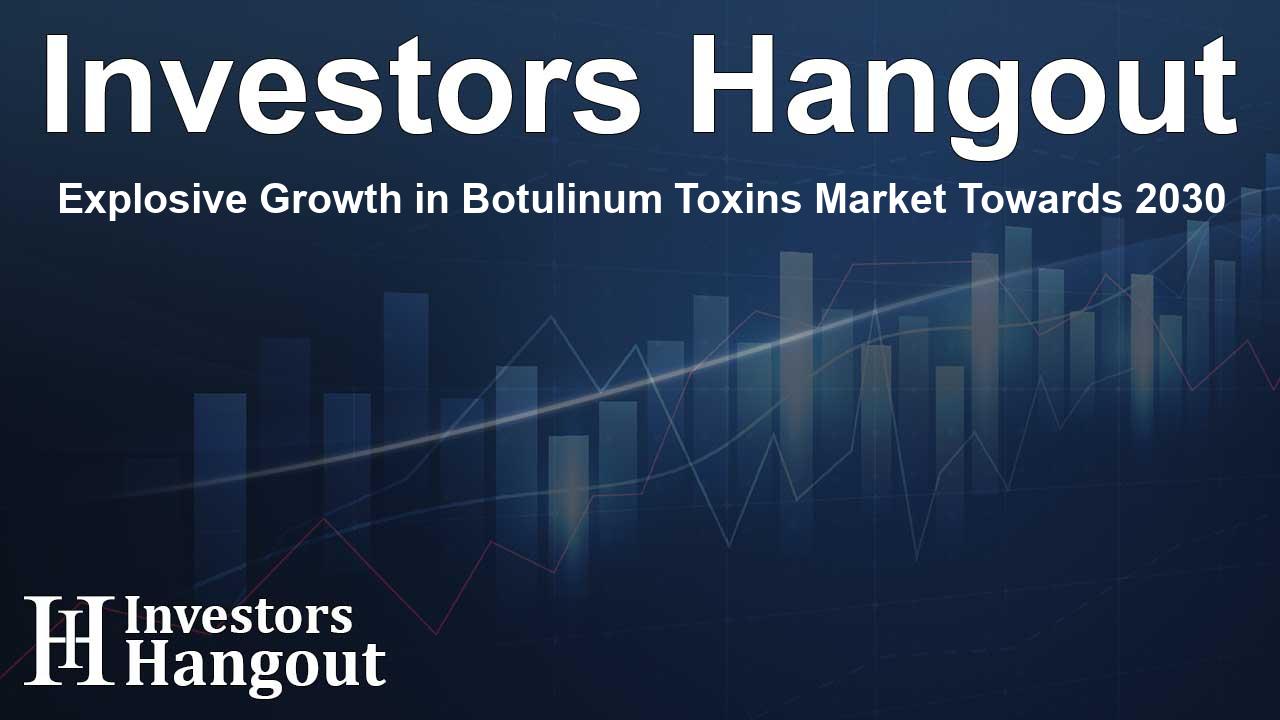Explosive Growth in Botulinum Toxins Market Towards 2030

The Booming Botulinum Toxins Market: A Brief Overview
As we continue to embrace advancements in medical and aesthetic procedures, the botulinum toxins market emerges as a prominent player, showcasing remarkable growth potential. This market, valued at approximately USD 8.1 billion in 2024, is expected to surge to an estimated USD 15.7 billion by 2030. Its impressive growth rate, forecasted at 11.7% CAGR, underscores a significant demand from both aesthetic enhancements and therapeutic treatments.
Factors Driving Market Growth
A noticeable shift in cultural attitudes towards beauty and wellness is enhancing the appeal of botulinum toxins. The desire for non-invasive solutions that deliver quick results has made these toxins a favored choice for various demographics, particularly younger individuals seeking preventive aesthetic treatments. The increasing acceptance of these procedures in societal and professional realms highlights the growing focus on youthful appearances.
Emerging Markets and Their Potential
Countries across Asia-Pacific, including South Korea, China, India, and Japan, are paving the way for innovative growth opportunities. The rising affluence of the middle class, augmented by the influence of social media, is making high-quality aesthetic services more accessible. This increasing demand suggests a lucrative market landscape ready for exploration.
Adapting to Market Trends
The rise of preventive and corrective aesthetic treatments has been a game-changer in this industry. Younger consumers are increasingly adopting wrinkle prevention strategies, and the efficacy of botulinum toxins in therapeutic applications, such as treating chronic migraines and overactive bladder, further broadens its market appeal. Additionally, enhancements in technology and training within the industry ensure that safety protocols are maintained, providing increased confidence for practitioners and patients alike.
Understanding the Competitive Landscape
The botulinum toxins market is marked by strong competition from established players. Companies like AbbVie Inc., Ipsen Biopharmaceuticals Inc., and Galderma are leading the charge, leveraging their extensive portfolios for both therapeutic and aesthetic applications. AbbVie continues to dominate the market with Botox, while Ipsen’s Dysport is a notable contender.
Innovation and Expansion
Recent strategic moves by key players signify a dynamic interplay of innovation and expansion in this sector. For instance, Daewoong Pharmaceutical successfully launched NABOTA in Saudi Arabia, while Hugel, Inc. has gained UAE approval for its product Botulax. These advancements exemplify the aggressive push for market penetration and broader consumer access.
Challenges and Opportunities in the Market
Despite the promising outlook, the market faces several challenges. Issues such as pricing pressures pose a barrier to market expansion, particularly for cosmetic applications that are often not reimbursed. Additionally, regulatory variations across different countries can lead to delays, impacting the speed of product launches in new regions. Notably, there’s a significant skills gap regarding qualified injectors in emerging markets, which poses both safety and access challenges. Nevertheless, the demand for botulinum toxins continues unabated, largely due to strong endorsements from leading medical organizations, ensuring confidence in their therapeutic benefits.
Regional Insights: Asia-Pacific in Focus
Asia-Pacific is poised to be the fastest-growing region for botulinum toxins through 2030. The allure of medical tourism, particularly in locations like South Korea, combined with expanding urban aesthetic clinics in China, is a driving force. Rising disposable income and changing consumer preferences in India and Southeast Asia propel this market even further.
In Summary
The future looks bright for the botulinum toxins market. With a growing cultural emphasis on aesthetics and an expanding array of therapeutic uses, the industry stands on the cusp of significant evolution. By concentrating on untapped opportunities and navigating market challenges, players in this sector can drive sustained growth and meet the diverse needs of consumers everywhere.
Frequently Asked Questions
What is the projected market value of the botulinum toxins by 2030?
The botulinum toxins market is expected to reach approximately USD 15.7 billion by the year 2030.
What factors are driving growth in the botulinum toxins market?
Growing demand for aesthetic procedures, therapeutic applications, and advancements in technology are key growth drivers.
Which regions are leading in the growth of the botulinum toxins market?
Asia-Pacific is projected to be the fastest-growing region, fueled by rising disposable incomes and increased medical-grade service accessibility.
What challenges does the market face?
The market is challenged by pricing pressures, regulatory differences, and a skills gap in emerging markets.
Who are the major players in this market?
Key players include AbbVie Inc., Ipsen Biopharmaceuticals Inc., and Galderma, who continue to innovate and expand their product offerings.
About The Author
Contact Owen Jenkins privately here. Or send an email with ATTN: Owen Jenkins as the subject to contact@investorshangout.com.
About Investors Hangout
Investors Hangout is a leading online stock forum for financial discussion and learning, offering a wide range of free tools and resources. It draws in traders of all levels, who exchange market knowledge, investigate trading tactics, and keep an eye on industry developments in real time. Featuring financial articles, stock message boards, quotes, charts, company profiles, and live news updates. Through cooperative learning and a wealth of informational resources, it helps users from novices creating their first portfolios to experts honing their techniques. Join Investors Hangout today: https://investorshangout.com/
The content of this article is based on factual, publicly available information and does not represent legal, financial, or investment advice. Investors Hangout does not offer financial advice, and the author is not a licensed financial advisor. Consult a qualified advisor before making any financial or investment decisions based on this article. This article should not be considered advice to purchase, sell, or hold any securities or other investments. If any of the material provided here is inaccurate, please contact us for corrections.
